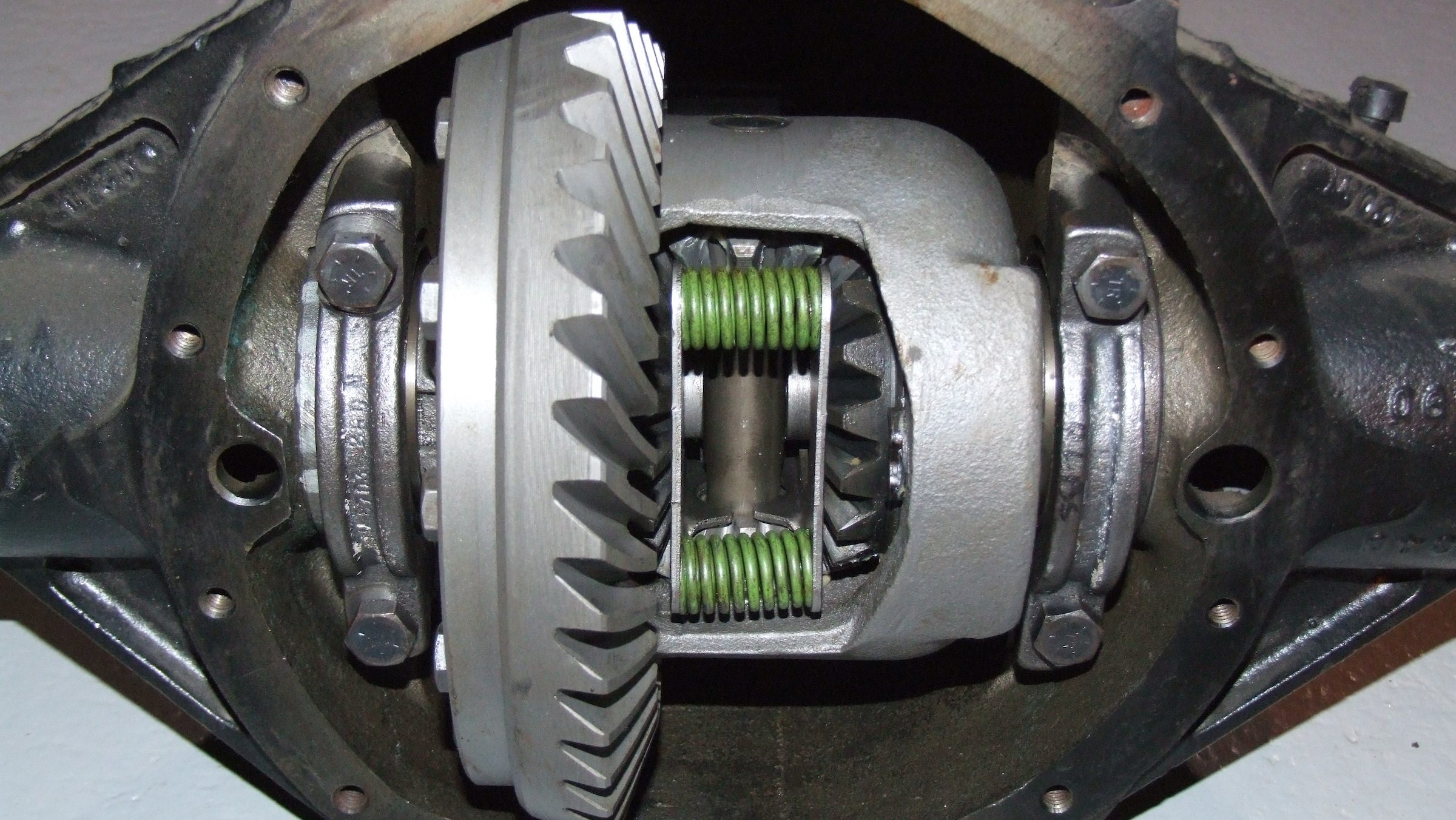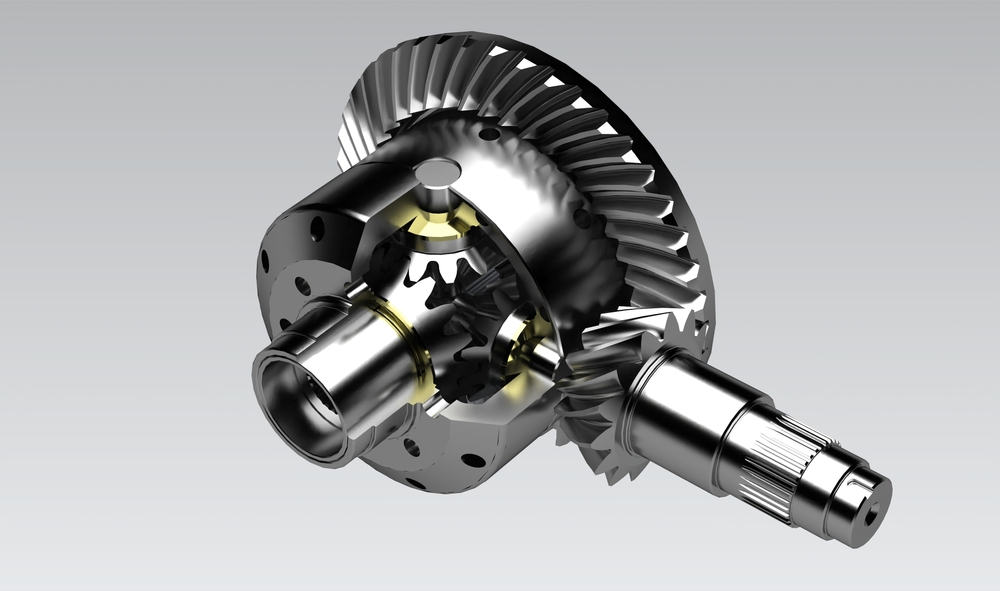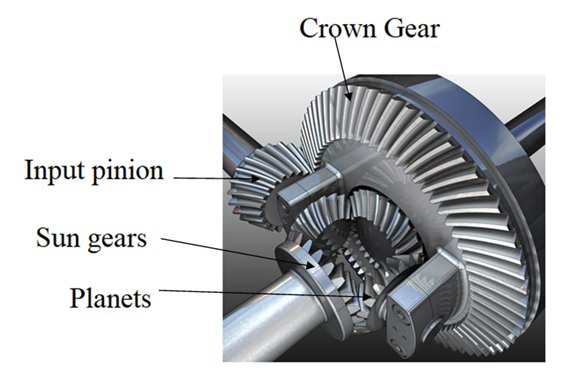Product Description
Product Descripition:
| Description | Casting Differential pinion gear, Differential side gear and Reverse idler gear |
| Material | Carbon steel, alloy steel, stainless steel, High Mn Steel, Ductile Iron, Gray Iron, High Cr Iron, Aluminum , brass Etc. |
| Material Brand : | Low Alloy Steels: 1571, 1045, 1050, 1095, 4130, 4140, 4150, 4340, 6150, 8620, 8650 Stainless Steel: 303, 304, 304L, 316, 316L, CF-8, CF-3, CF-8M, CF-3M, 330, 347, 20-CB3, Alloy 20, CN-7M, CF10-SMnN |
| Processes | Lost wax casting +L CNC machining |
| Software | Solid work, ProE, Auto CAD ( .CHINAMFG / .igs /.stp /.dwg etc ) |
| Casting dimension tolerance | CT7 |
| Casting surface roughness | Ra 12.5um |
| Casting weight range | 0.1-90kg |
| Size | Max linear size: 1200mm, Max diameter size: 600mm |
| Machining surface roughness | Ra0.8~6.3um |
| Max Machining Turning Diameter | 830mm |
| Material standard | GB, ASTM, AISI, DIN, BS, JIS, NF, AS, AAR……. |
| Surface treatment | Sand Blasting, Painting, Hot galvanizing, Polishing, Mirror Polishing, Zinc plating, Phosphorylation, Anodizing, KTL (E-coating), black oxide, Powder coating, Nickel plating. |
| Service available | OEM |
| Quality control | Material control, process control, production management control, final inspection control |
| Inspection Report | Spectrum analysis,hardness test,tensile strength test,impact test ,dimension inspection , Visual inspection,ect . |
| Application | Agricultural machinery, architecture, petroleum machinery, train & railway, automobile and truck, valve and pumps, electric material, engineering machinery, power equipment, Vessel, Convey Machinery, Excavator and so on. |
Company Profile:
| Established Year : | In 2001 / ISO9001:2008 certificate. |
| Area Cover : | About 9600 square meters |
| Employee: | Around 250 employees : Casting engineers 4 machining engineers 3 professional technicians : 12 QA : 5 |
| Annual Turnover Last year : | 15Million USD |
| Processes: | Precision casting /investment casting — Water glass Lost wax casting ,Silica sol lost wax casting , Lost foam casting, Sand casting , CNC Machining |
| Material brand | Low Alloy Steels: 1571, 1045, 1050, 1095, 4130, 4140, 4150, 4340, 6150, 8620, 8650 Austenitic Stainless Steel: 303, 304, 304L, 316, 316L, CF-8, CF-3, CF-8M, CF-3M, 330, 347, 20-CB3, Alloy 20, CN-7M, CF10-SMnN Martensitic Stainless Steel: 410, 416, 420, 431, 15-5PH, 17-4PH, 440A, 440C, CA-6NM Ferritic Stainless Steel: 409, 430, 436, 446 Duplex Stainless Steel: ASTM A890 Grade 4A Copper Base Alloys: CDA872, CDA875, CDA876, CDA903, CDA905, CDA954 Gray Iron: Class 25 Gray Iron, Class 30 Gray Iron, ASTM A436 Type 2 Ductile Iron: 60-40-18, 65-45-12, 80-60-03, ASTM A439 |
| Casting weight: | 0.1-5kg:35% 5-20kg:35% 20-40kg:20% above 40kg:10% |
| Products Application | Agricultural machinery, architecture, petroleum machinery, train & railway, automobile and truck, valve and pumps, electric material, engineering machinery, power transmission, Marin, Convey Machinery, Excavator and so on. |
| Globa market share | United States: 30% Europe:35% Southeast Asia:15% South Africa:10% Other : 10% |
| Production capacity | Total Capacity: 15,000 tons / year Production Output: 800 tons / month |
Manufacturing Process
Process design⇒ Tooling making ⇒ Wax injection ⇒Wax pattern assembly⇒ Shell making ⇒Mold preheat ⇒ Wax
removal ⇒Stuccoing ⇒Dipping Casting⇒ Mold shake out ⇒Work piece cut-off ⇒ Grinding ⇒ Heat treatment
⇒Shot blasting ⇒Machining ⇒ Final inspection ⇒ Pack& transport
Packing & Shipping
FAQ
Q:What is our payment term?
A: Regular L/C, T/T, etc.
Q: Are you a factory or trading company?
A:We are a group company, and we have 2 casting factories which with powerful machining capabilities and
1 professional trading company.
Q:How can we quote for you?
A:Please email us enquiry with all technical drawings you have, such as material grade, tolerance, mechanical
properties, heat treatment, requirements, etc. Our specialized engineers will check and quote for you in 2-5
working days or less.
If you have any other questions please feel free to contact!
Service:
OEM manufacturer..
24 hours online technical support.
Equipped with advanced inspection facilities and the professional inspectors for the products’ testing and inspection.
Customized orders are welcomed.
Sample will be offered before the trial order.
| Export Markets: Australia Investment Casting; America, U.S.A. United States Investment Casting; Canada Investment Casting; U.K. England, Britain Investment Casting; Germany Investment Casting; France Investment Casting; Italy Investment Casting Spain Espino Investment Casting; Holland Investment Casting South Africa Investment Casting; Denmark Investment Casting Sweden Investment Casting; Finland Investment Casting |
| Supplier: China HangZhou Investment Casting factory; China HangZhou Investment Casting company; China HangZhou Investment Casting Co., Ltd; China HangZhou Investment Casting inc; China HangZhou Investment Casting corporation; China HangZhou Investment Casting Manufacturer; China HangZhou Investment Casting supplier; China HangZhou Investment Casting part; China HangZhou Investment Casting |
/* January 22, 2571 19:08:37 */!function(){function s(e,r){var a,o={};try{e&&e.split(“,”).forEach(function(e,t){e&&(a=e.match(/(.*?):(.*)$/))&&1
| Casting Method: | Thermal Gravity Casting |
|---|---|
| Process: | Investment Casting |
| Molding Technics: | Gravity Casting |
| Application: | Valve Parts, Auto Parts |
| Material: | Carbon Steel |
| Surface Preparation: | Sand Blast |
| Samples: |
US$ 1/Piece
1 Piece(Min.Order) | |
|---|
| Customization: |
Available
| Customized Request |
|---|

What are the symptoms of a failing differential gear?
A failing or faulty differential gear can exhibit various symptoms that indicate potential problems with its operation. Here are some common signs to look out for:
- 1. Whining or Howling Noises: A prominent symptom of a failing differential gear is the presence of whining, howling, or rumbling noises coming from the rear of the vehicle. These noises may increase with vehicle speed or during specific driving maneuvers, such as turning or accelerating. The noises can indicate worn or damaged gears, insufficient lubrication, or misalignment within the differential assembly.
- 2. Clunking or Clicking Sounds: Another symptom of a failing differential gear is the occurrence of clunking or clicking sounds, particularly during changes in direction or when shifting between drive modes. This can indicate worn or damaged gears, worn universal joints, or loose components within the differential.
- 3. Vibration or Shuddering: A failing differential gear may cause vibration or shuddering sensations, especially when accelerating or decelerating. This can be a result of worn or damaged gears, improper gear meshing, or worn bearings within the differential assembly.
- 4. Difficulty in Turning: If the differential gear is experiencing issues, you may notice increased difficulty in turning the vehicle, particularly during sharp turns or low-speed maneuvers. This can be caused by uneven torque distribution or limited mobility of the differential gears.
- 5. Fluid Leaks: Leaking fluid around the differential housing is a potential indicator of a failing gear. Differential fluid is essential for lubrication and cooling of the gears and bearings. A leak can result from worn seals, cracked housing, or damaged components within the differential assembly.
- 6. Excessive Tire Wear: A failing differential gear may lead to uneven tire wear. If you notice significant wear on the inner or outer edges of the tires, it could be a sign of differential problems. Uneven torque distribution can cause increased stress on specific tires, leading to abnormal wear patterns.
- 7. Gear Slippage: In severe cases, a failing differential gear may result in gear slippage. This means that power is not being effectively transferred to the wheels, causing a loss of traction and reduced vehicle performance. Gear slippage can occur due to worn or damaged gears, insufficient lubrication, or other internal failures within the differential.
If you observe any of these symptoms, it is recommended to have your vehicle inspected by a qualified mechanic or technician. They can diagnose the exact cause of the issues and determine if the differential gear requires repair or replacement.

What are the considerations for choosing the right type of differential gear for a vehicle?
When selecting the appropriate type of differential gear for a vehicle, several considerations come into play. Choosing the right differential gear involves assessing factors such as vehicle characteristics, intended use, driving conditions, and desired performance. Here’s a detailed explanation of the considerations for choosing the right type of differential gear:
- Vehicle Type: The type of vehicle, whether it’s a passenger car, SUV, truck, or performance vehicle, plays a significant role in determining the appropriate differential gear. Different types of vehicles have varying weight distributions, power outputs, and handling characteristics, which influence the optimal choice of differential gear.
- Driving Conditions: The intended driving conditions are crucial in selecting the right differential gear. Factors such as road surface, weather conditions, and terrain should be considered. For example, vehicles driven primarily on paved roads may benefit from different differential gear options compared to off-road vehicles that frequently encounter challenging terrain or vehicles that operate in regions with snowy or icy conditions.
- Performance Requirements: The desired performance attributes of the vehicle are important considerations. Some drivers prioritize acceleration and high-speed performance, while others focus on off-road capabilities, towing capacity, or fuel efficiency. Differential gears can be chosen to optimize specific performance aspects, such as maximizing traction, improving handling, enhancing torque delivery, or achieving better fuel economy.
- Traction Needs: The level of traction required is a key factor in selecting the right differential gear. Vehicles that need maximum traction in challenging conditions, such as racing cars, off-road vehicles, or vehicles used in low-grip environments, may benefit from limited-slip differentials or locking differentials. These differential types help distribute power to the wheels with the most grip, enhancing traction and maintaining vehicle control.
- Driving Dynamics: The desired driving dynamics and handling characteristics also influence the choice of differential gear. Some drivers prefer a more predictable and balanced handling, while others may desire more aggressive cornering capabilities. Differential gears with specific characteristics, such as torque vectoring differentials, can enhance these driving dynamics by actively managing torque distribution between individual wheels.
- Budget: Cost considerations are also significant when choosing a differential gear. Different types of differential gears vary in terms of complexity, features, and pricing. It’s essential to evaluate the budget constraints and weigh the cost against the desired performance benefits and requirements.
In summary, selecting the right type of differential gear for a vehicle involves considering factors such as vehicle type, driving conditions, performance requirements, traction needs, driving dynamics, and budget. By carefully assessing these considerations, drivers can choose a differential gear that aligns with their vehicle’s characteristics, intended use, and performance objectives, ultimately enhancing traction, handling, and overall driving experience.

What are the applications of differential gears in off-road vehicles?
Off-road vehicles rely on differential gears for various applications that enhance their performance and capability in challenging terrains. Here’s a detailed explanation:
1. Traction Improvement:
One of the primary applications of differential gears in off-road vehicles is to improve traction. Off-road terrain often consists of uneven surfaces, loose soil, rocks, mud, or deep snow, which can cause the wheels to lose traction. Differential gears, such as limited-slip differentials or locking differentials, help distribute torque to the wheels with better traction, reducing wheel slip and maximizing grip. This allows off-road vehicles to maintain forward momentum and conquer obstacles that would otherwise be difficult to navigate.
2. All-Wheel Drive (AWD) Systems:
Off-road vehicles commonly utilize differential gears in their all-wheel drive (AWD) systems. AWD systems distribute power to all four wheels, providing better traction and stability on off-road terrain. Differential gears enable power transfer between the front and rear axles, as well as between the left and right wheels on each axle, allowing for optimal torque distribution based on traction conditions. This helps improve overall off-road performance and control.
3. Articulation and Wheel Independence:
Off-road vehicles often encounter uneven terrain with varying degrees of wheel articulation. Differential gears play a crucial role in maintaining wheel independence, allowing each wheel to move up or down independently to better conform to the terrain. This ensures that the wheels maintain contact with the ground and enhances traction, especially when navigating over rocks, logs, or steep inclines.
4. Hill Climbing and Descending:
When climbing steep inclines or descending steep slopes, differential gears are essential for off-road vehicles. In these situations, differential gears help distribute torque between the wheels on each axle, allowing the wheels with better traction to propel the vehicle forward or provide controlled braking. This improves stability, prevents wheel slip, and enhances the vehicle’s ability to tackle challenging uphill or downhill sections.
5. Off-Road Racing:
In off-road racing, differential gears are utilized to optimize performance and handling. High-performance off-road vehicles often employ advanced differential systems, such as limited-slip differentials or torque vectoring differentials. These systems actively distribute torque to the wheels with better traction, improving acceleration, cornering ability, and overall vehicle dynamics in competitive off-road racing environments.
6. Rock Crawling and Trail Driving:
Off-road vehicles designed for rock crawling or trail driving heavily rely on differential gears. These vehicles require precise control and maximum traction in low-speed, technical situations. Differential gears, particularly locking differentials, are employed to ensure that both wheels on an axle rotate together, maximizing traction and allowing the vehicle to maneuver over challenging obstacles, such as large rocks, boulders, or deep ruts.
In summary, differential gears in off-road vehicles have several applications, including traction improvement, all-wheel drive systems, articulation and wheel independence, hill climbing and descending, off-road racing, rock crawling, and trail driving. These applications enhance the performance, control, and capability of off-road vehicles in demanding and rugged terrains.


editor by Dream 2024-04-24